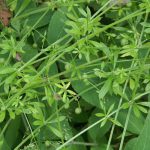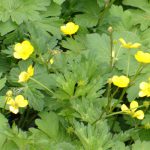Creeping Thistle
Cirsium arvense

There are many varieties of thistle which you may find in your garden. The creeping thistle is a voracious weed which will take over if allowed. Be sure to dig it out as it appears but watch out for the sharp stems. Try and avoid breaking the root as a new plant will grow but it will be weaker and will be easier to remove.
Spreading roots mean that the thistles form large clumps of spiny jaggy leaves and pink/purple flowering stems ranging from 30cm-1m (1ft-3¼ft) in height on mainly grassland.
Leaves
Creeping Thistle leaves are wavy and spiny. They generally less fleshy and pale green compared with other thistles.

Flowers
Dark pinky-purple flowers typical of the thistle family are borne July to September. Like most thistles, it produces masses of fluffy wind-borne seeds in late summer.

Preferred Habitat
Creeping thistle is a common sight in fields, roadsides as well as in gardens.
Weed Control
Once established, it can be difficult to eradicate permanently. You may find that repeated digging out of roots reduces the problem, but chemical control will provide a quicker solution.
Not Just a Weed
Young thistle leaves are edible and remarkably tasty. Individual leaves can be rolled up to smash the spines and eaten like that, or placed whole on sandwiches.
The root is tonic, diuretic, astringent, antiphlogistic and hepatic. It has been chewed as a remedy for toothache.
The thistle is the national flower of Scotland.













